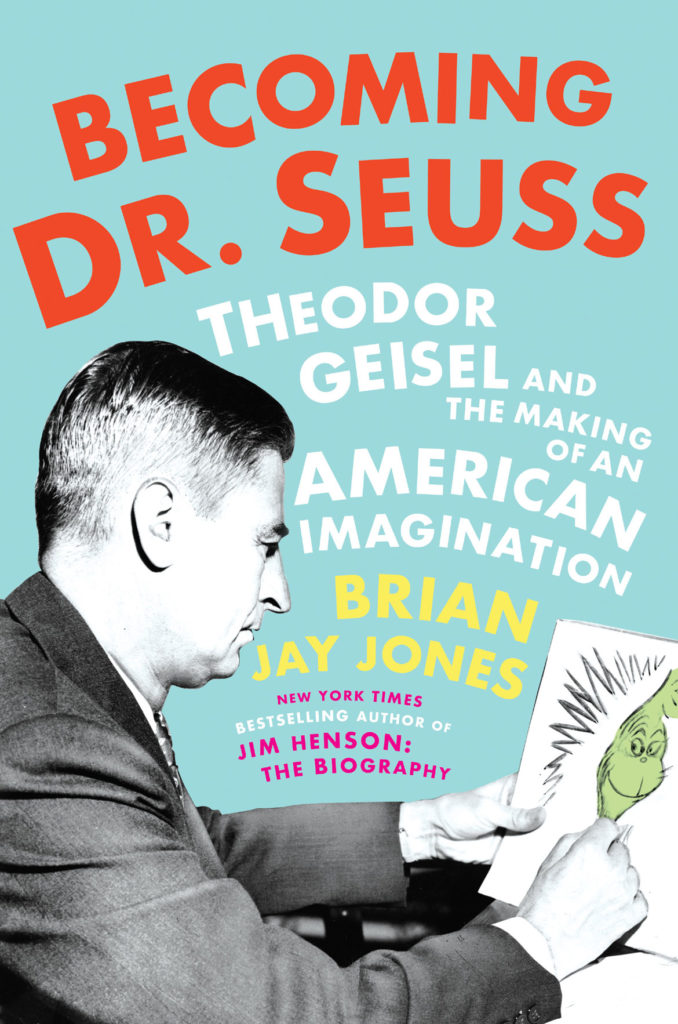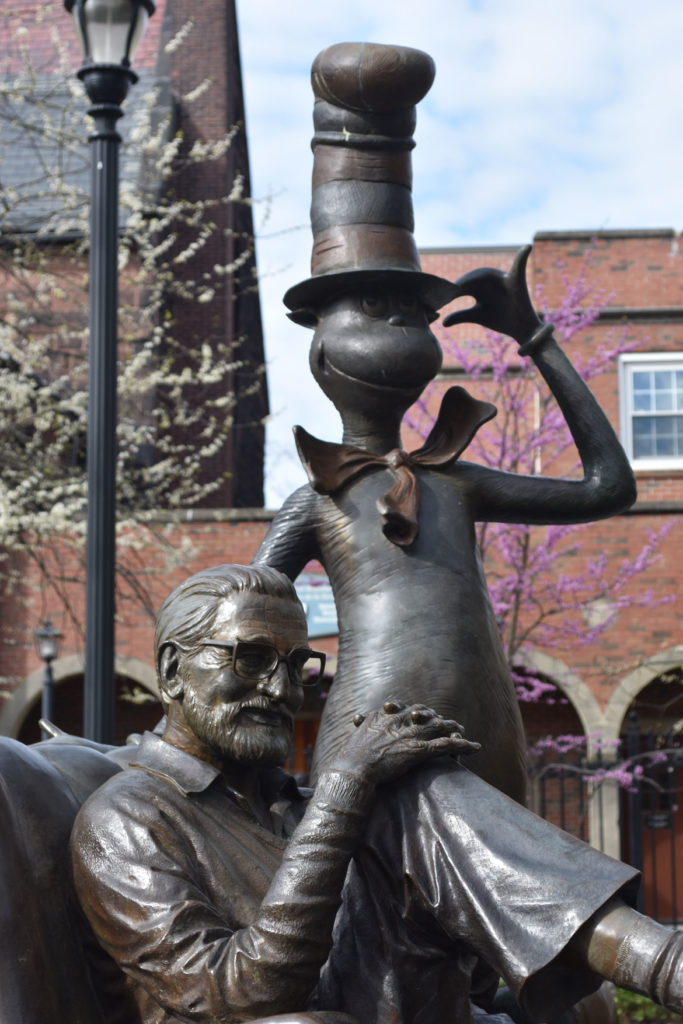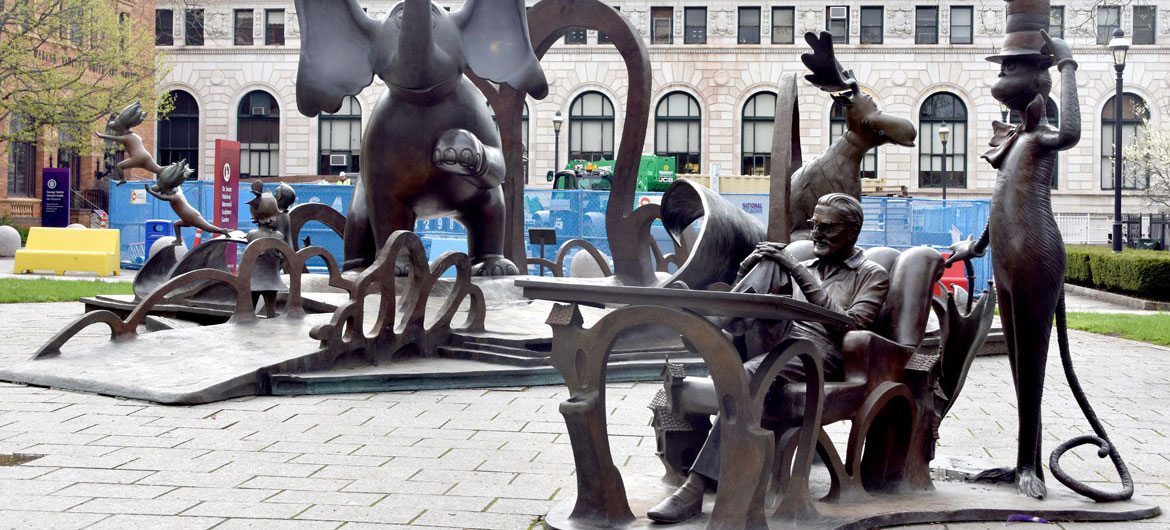I binge read Brian Jay Jones’s biography “Becoming Dr. Seuss: Theodor Geisel and the Making of an American Imagination” (Dutton). I couldn’t put it down. Jones tells Geisel’s bumpy journey of a gifted creative stumbling to find his sea legs in the early 20th century economy, and moves on to give a drafting-table-side-seat to witness the birth of each early reader that ignited my own childhood imagination.
Dr. Seuss was born Theodore Geisel in Springfield, Massachusetts, in 1904. His German immigrant grandpa was the founder of a brewing company, and his grandpa’s favorite hobby was driving his giant, beautiful draft horses that pulled his beer wagon. This was an inspiration for Seuss’s first kids book, “And to Think That I Saw It on Mulberry Street,” published in 1937.

Seuss was a C student at Dartmouth College in New Hampshire. He was one of those people who drew comics for the school humor magazine—adopting the pen name, Dr. Seuss, his mother’s family name, so he could continue publishing cartoons after being banned from the publication by school authorities for getting caught drinking illegal gin in his room. As a young American at Oxford, struggling with boredom at J.R.R. Tolkein’s lectures, he doodled his weird animals in the margins of his lecture notes. A classmate, Helen Palmer, viewing his doodles over his shoulder and noting his incompatibility with the career path of English professor, advised him to try to find a way to make money with those weird creatures. She married this creative diamond in the rough, and completely devoted herself to his career. She helped with the writing, accounting and administration.
In New York, Seuss drew cartoons and illustrations for magazines and advertising—including, “Quick, Henry, the Flit!” for a bug spray manufactured by Standard Oil. As World War II broke out, he drew pro-Roosevelt, anti-Hitler, anti-Japanese newspaper political cartoons. Growing up during World War I, Seuss kids hucked coal at him out of anti-German-American bigotry. But during World War II, Seuss supported imprisoning Japanese-Americans. Jones makes a good point: Seuss should have known better.
In 1943, Seuss joined an Army motion picture unit. I was so jealous to learn how for his military duty in WWII, he got to have an apprenticeship learning storyboarding and filmmaking with Frank Capra, best known for directing the 1946 film “It’s a Wonderful Life.” Capra taught him how to hone his storyboarding skills, especially how to strike any words or images that failed to move the story forward.
Seuss made an Army film about how to kindly, forgivingly relate to Germans after victory. He worried about German children raised on Hitler’s propaganda, brainwashed by it. He thought they deserved better. He wondered how are we going to help young children develop their minds? Then in preparation for the defeat of the Japanese, Seuss made a documentary film “Our Job in Japan,” about how to sympathetically relate to the Japanese as well. But the government didn’t release it. It got reworked for commercial release as 1947’s “Design for Death,” and won the Academy Award for Best Documentary Feature. Seuss would dedicate his 1954 book “Horton Hears a Who” to the Japanese. He acknowledged their humanity and regretted that his war propaganda had helped dehumanize them.
I so appreciate all the detailed insights into how the artist gained skills, strategies and vision, made mistakes, tried new things, failed sometimes, reframed difficulties with humor and absurdity. It took years for his children’s books to become successes. He finally broke through with books like “The Cat In The Hat” (1957) and “How the Grinch Stole Christmas!” (1957).

With his success, his publisher, Random House, gave him his own Beginning Reader imprint to oversee. He picked the Berenstains, but insisted on a name change: No, you’re Stan and Jan; nobody wants to say Stanley and Janice.
In 1948, Geisel and Helen moved to La Jolla, California, and built a fantasy home and studio overlooking the Pacific. Their neighbors included a doctor and his nurse wife by the name of Audrey, with whom Seuss had a love affair. When Helen found out, she killed herself in 1967. Seuss promptly married Audrey. I was really creeped out by this turn with his relationships. It really challenges your fandom to read such creepy stuff about creatives whose work you admire.
Then I would have these moments where, oh my gosh, they’re going to talk about THIS book! And I would be instantly transported to my childhood, reliving my bottomless delight for each of his books as a beginning reader and simultaneously taking notes an adult who aspires to the craft. I couldn’t put the book down. “Becoming Dr. Seuss” is a must-read for any writer, illustrator or educator of young children. The only things I found missing were photo illustrations of Dr. Seuss’s early years and work, and I’m left wanting to know more about Helen, who wrote several children’s books herself, but whose identity was consumed as his helper to a tragic end.
I love how Jones wove details about formative moments of Seuss’s skill building and his creative process in with stories of the events of his life. A lot of times, writers skimp on this in biographies, but Jones really shares a lot of insight on Seuss’s thought processes and problem solving progressions. Truly magic.
If this is the kind of coverage of arts, cultures and activisms you appreciate, please support Wonderland by contributing to Wonderland on Patreon. And sign up for our free, weekly newsletter so that you don’t miss any of our reporting.
